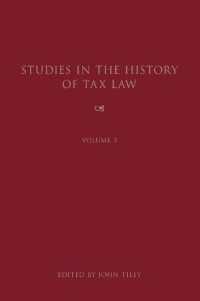Full Description
Here is an overview of students with disabilities in postsecondary institutions and the importance of allies in their lives. It is a call to action for faculty, staff, and administrators in all facets of higher education, and emphasizes the shared responsibility toward students with disabilities and toward creating meaningful change. This monograph begins with a look into the future of disability education. How will students create their own identities? Will there be a need for disability accommodations or will a universally designed world eliminate that current necessity? It also looks at the past, with discussions of disability legislation such as the ADA of 1990, the impact of Supreme Court decisions, descriptions of college students with disabilities, and the paradigm shift from the medical deficit model of disability to one that focuses on the individual s lived experience as a social construct. Drawing on theoretical frameworks in multiple disciplines, disability identity development is explained, ally development is defined, and disability services are explored.
The monograph ends with a discussion of where disability education is now and how faculty, staff, and administrators will continue to be allies of inclusion for students in the years to come. This is the 5th issue of the 39th volume of the Jossey-Bass series ASHE Higher Education Report. Each monograph is the definitive analysis of a tough higher education issue, based on thorough research of pertinent literature and institutional experiences. Topics are identified by a national survey. Noted practitioners and scholars are then commissioned to write the reports, with experts providing critical reviews of each manuscript before publication.
Contents
Executive Summary ix Foreword xiii Acknowledgments xvii The Future of Equity and Inclusion: Creating Meaningful Change 1 Disability Defined: What Does It Mean? 6 Overview of the Monograph 8 A Historical Overview of the Disability Movement 13 Key Definitions and Early Policies 13 Groundbreaking Legislation: The Rehabilitation Act and ADA 16 Discussion of Key Court Cases 21 Conclusion 28 Disability of College Campuses: An Overview 31 Disability in Higher Education: What Is It? 32 College Students With Disabilities: Who Are They? 35 College Students With Disabilities: What Are They Saying? 38 Perceptions and Preferences of Students and Employees With Disabilities 41 Disability Services in Higher Education: What Is Provided? 43 Students With Disabilities: A Shared Responsibility 46 Conclusion 48 Understanding Campus Complexity: Problems, Challenges, and Marginalization 49 Models of Disability 50 Major Student Development Theories Related to Disability 55 Attitudes Toward Disability 59 Disability Services on Campus 63 Student Veterans With Disabilities 65 Conclusion 66 Increasing Awareness: Allies, Advocacy, and the Campus Community 69 Defining Ally 70 Membership 72 Allies From Majority Identities 73 Allies Within Community 74 Theories of Ally Development 75 Praxis 80 Community of Allies 82 Allies for Disability: A Paradigm for Support 82 Conclusion 84 Increasing Awareness: Language, Communication Strategies, and Universally Designed Environments 85 Language of Disability 86 Communication Strategies 89 Communication Tips 90 Universally Designed Environments 93 Universal Design 93 Universal Instructional Design 94 Universal Design for Student Development 96 Conclusion 98 The New Movement in Disability Education and Advocacy 101 A New Vision for Disability 101 Education Curriculum 104 Inclusion Initiatives 104 The New Look of Disability 106 A Personal Call to Action 106 A Global Call to Action 107 References 109 Name Index 121 Subject Index 125 About the Authors 131






